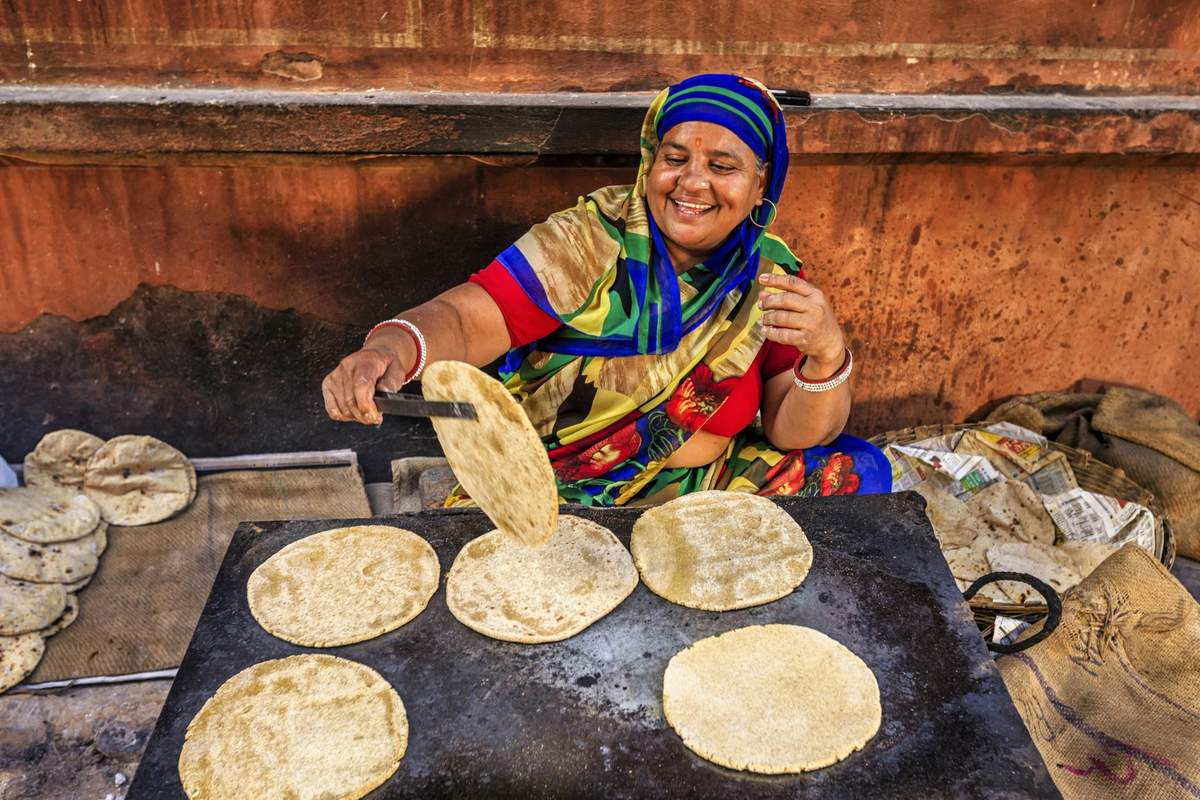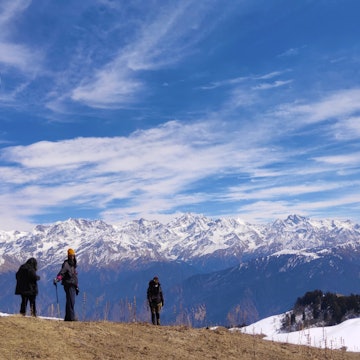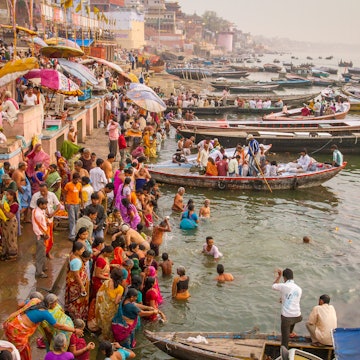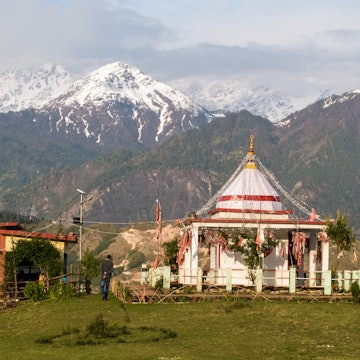
Exploring India’s Western Ghats: tea gardens, wildlife and hill stations

Jun 27, 2025 • 7 min read

A view of Kodaikanal, in Tamil Nadu in the Western Ghats. Lalu369/Shutterstock
India’s lush, forest-cloaked Western Ghats contain an untamed natural world.
Running parallel to the coastline of the Arabian Sea for 995 miles (1600km) all the way from Gujarat to deep-south Tamil Nadu, these mountains are also home to waves of emerald-green tea gardens and a crop of lively hill stations.
In the 19th century, British colonizers sought refuge from the sweltering lowland heat in these cool, mist-shrouded mountains of native shola (virgin forest), establishing South India’s string of eccentric villages – known locally as hill stations. Today, it is mostly Indian travelers who flock to the Western Ghats seeking cool air, natural beauty, green vistas and sheer serenity.
On average, these mountains reach 3000ft (915m); in the southern state of Tamil Nadu, they tower over 8200ft (2500m) high – especially in the Nilgiri Hills and the Palani Hills, home to South India’s most famous hill stations. Just west across the border in Kerala, some of the world’s highest-altitude tea gardens sprawl around Munnar.
Beyond all this, the Western Ghats’ many hauntingly beautiful national parks and tiger reserves provide a home for elephants, langur monkeys, chital deer, gaur (Indian bison), big cats and other creatures. Most of these natural spaces are part of the UNESCO-designated Nilgiri Biosphere Reserve, a highly biodiverse 2130-sq-mile (5520-sq-km) area that crosses northwest Tamil Nadu into Kerala and Karnataka.
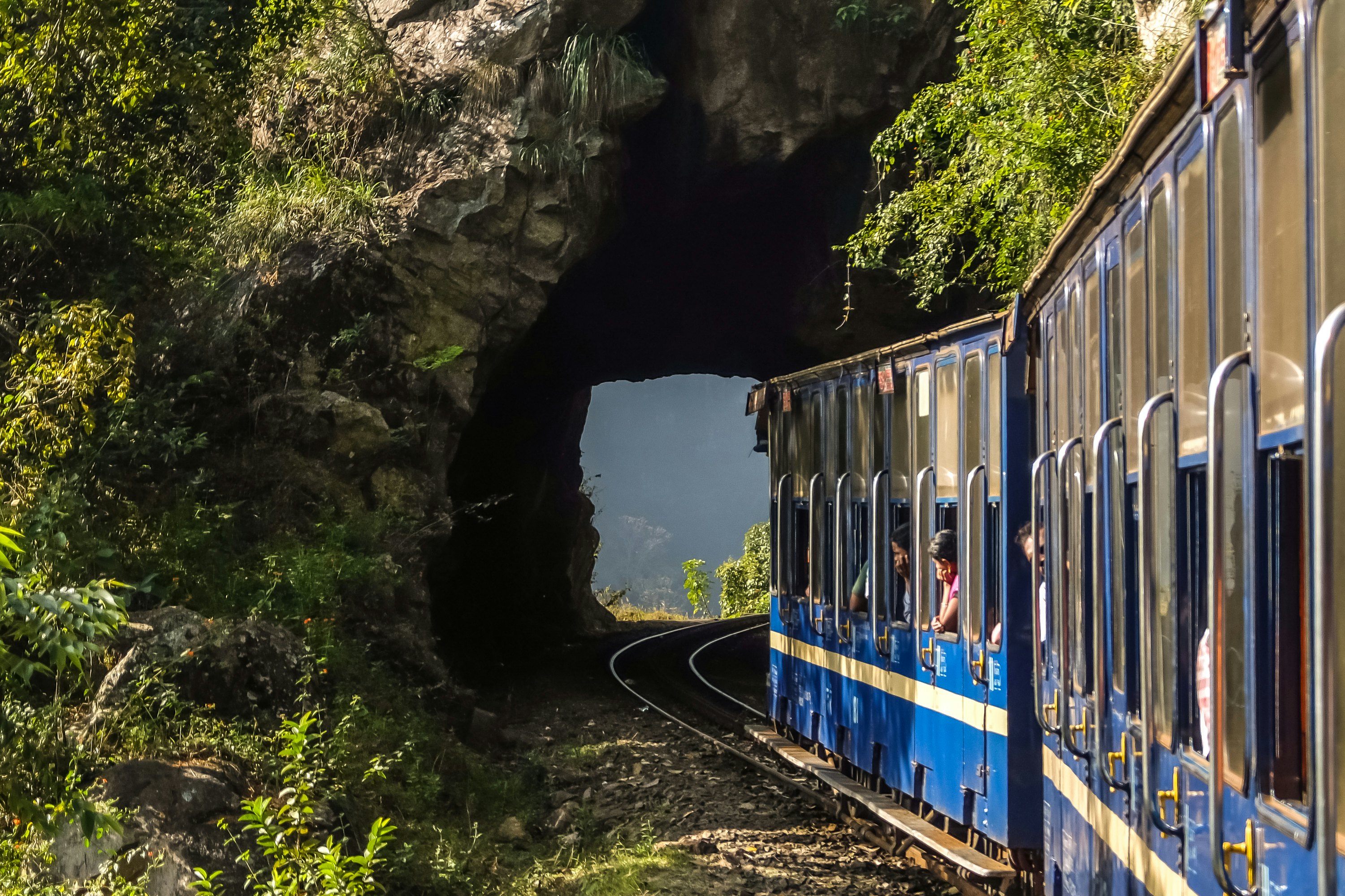
Chug through the forest on the Nilgiri Mountain Railway
For train lovers, one of South India’s greatest thrills is catching the celebrated narrow-gauge Nilgiri Mountain Railway up to the hill stations of Ooty (Udhagamandalam; elev 7350ft / 2240m) and Coonoor (5640ft / 1720m). Awarded World Heritage status by UNESCO, the blue-and-cream-colored “toy” train trundles between Mettupalayam (near Coimbatore) in northwest Tamil Nadu and Ooty (via Coonoor). Along the way, it traverses tunnels and zips across bridges, passing ever more spectacular forest and tea-estate views. You might even spy a wild elephant pushing through the undergrowth.
Savor the vibes of three famous hill stations in Tamil Nadu
Ooty
Like its Himalayan siblings, Ooty was founded in the early 19th century, when Madras (now Chennai) was the capital of British India’s Madras Presidency. Often called the “Queen of Hill Stations,” this is today Tamil Nadu’s most popular hill station, and also the springboard for exploring the wildlife-rich Mudumalai Tiger Reserve nearby.
Ooty’s Hindu temples, lively bazaar and pedal boat–packed lake give way to flower-wreathed lanes where colonial-era buildings like the red-hued 1867 Nilgiri Library still stand. Others have been reimagined as exquisite heritage hotels; try 1855 bungalow Lymond House or the early 19th-century Savoy. Ooty’s restaurants retain a firmly South Indian flavor, and you’ll feast on tasty idli, vada, dosas and pure-veg thalis aplenty here.

Coonoor
Encircled by emerald-green tea gardens, bustling Coonoor sits 12½ miles (20km) southeast of Ooty. Upper Coonoor makes a more peaceful alternative Nilgiri base than Ooty, with easy access to superb viewpoints, the 50-year-old Highfield Tea Estate, and heritage accommodation such as the 1900s-era bungalow 180 McIver. Meanwhile, quiet Kotagiri (5905ft / 1800m), 19 miles (30km) east of Ooty, is the Nilgiris’ original hill station; its earthy-red Sullivan Memorial dates from 1819 and was once the house of Ooty’s British founder John Sullivan.
Before the 19th century, the Nilgiris’ sole inhabitants were various tribal communities, including the Toda, who still live in the Ooty area and are known for their distinctive black-and-red embroidered shawls. The Tribal Research Centre Museum, 6¼ miles (10km) southwest of Ooty, delves into the lives and traditions of these now-threatened communities.

Kodaikanal (Kodai)
Ringed by the protected Palani Hills 155 miles (250km) southeast of Ooty, Tamil Nadu’s 6890ft(2100m)-high “Princess of Hill Stations” is Kodaikanal (Kodai), founded in 1845 by American missionaries escaping malaria in the Madurai lowlands. Often veiled in mist, it has its own distinct character thanks to its international school, organic-fired cuisine and popularity with Indian weekenders.
Rowboats bob on Kodaikanal’s star-shaped lake, and the hazy surrounding hillsides are carpeted with shola forest and – found only in the Western Ghats – kurinji shrubs, which blossom in lavender-blue just once every 12 years (next expected in 2030). Walks thread through forests to horizon-reaching viewpoints, shimmering lakes, and the budget-traveler haven of Vattakanal village (5km / 3 miles southwest of Kodai), which has the sociable vibe of a miniature South Indian Manali.
Kodai’s accommodation scene includes eco-friendly Cinnabar homestay and the five-star lake-view Carlton (a colonial-era mansion). Or book one of the sustainability-focused, design-led villas offered by LuxUnlock, a switched-on local operator with tempting private stays across the Western Ghats. To escape it all, retreat to eco-focused Elephant Valley in the Palani Hills below, where elephants wander the 120-acre grounds.

Dive into tea gardens, spice estates and cooking classes in Munnar, Kerala
Just over the border from Tamil Nadu in serene Kerala, Munnar (5000ft / 1524m) is the bustling hub of South India’s major tea-growing area. Much like Ooty, the vibe of Munnar’s commercial, traffic-choked center fades fast as you venture out into its mellow, enticingly green valleys and hills, where cottages hide amid the glinting leaves of manicured tea and cardamom plantations. You can join guided treks to high-altitude mountain outlooks and tea estates, or learn the secrets of Keralan cuisine at a cooking class with respected food writer Nimi Sunilkumar.
Munnar also has a thriving homestay scene, with local families welcoming visitors. Gorgeous Rose Gardens shines for its cooking courses, spice gardens and coconut-pancake breakfasts, all set in a 1920 heritage bungalow run on solar and biomass power.
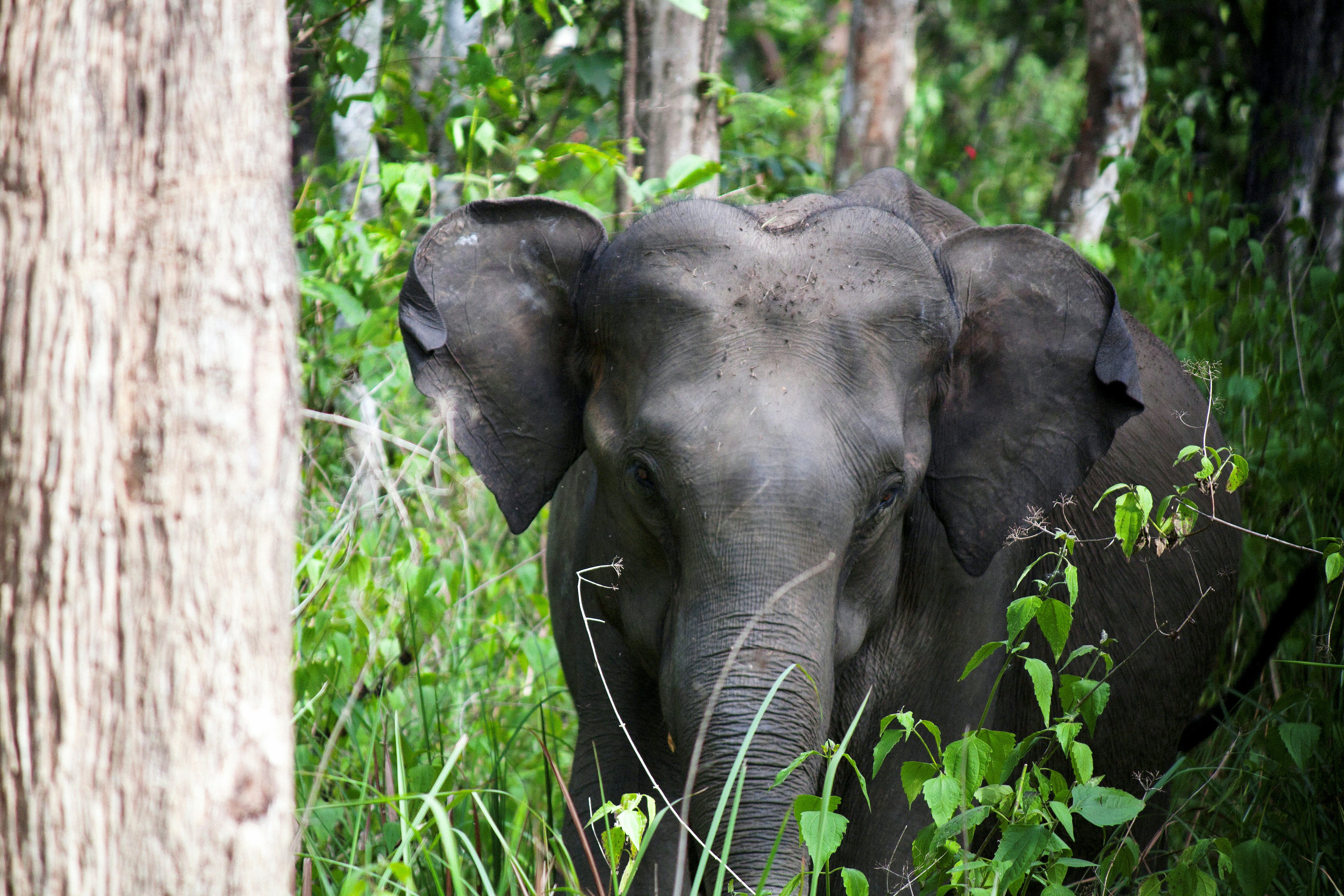
See rare wildlife in the Western Ghats at parks and reserves
A huge part of Western Ghats’ allure lies in its many national parks and tiger reserves, which create a vast, contiguous protected area that encompasses bits of Kerala, Karnataka and Tamil Nadu. According to India’s 2022 tiger census, over 800 tigers prowl these wilds. You’ll be lucky to spot one – but you should keep your eyes peeled, as there’s always a chance.
The secluded, un-touristed reaches of northern Kerala’s 133-sq-mile (345-sq-km) Wayanad Wildlife Sanctuary are arguably your best bet for encountering South India’s wild elephants; some 150 tigers also roam here. In southern Kerala, around 40 tigers and 900 elephants, plus sambar deer, wild boar and langurs, patrol the dense evergreen forests of Periyar Tiger Reserve, one of India’s most extensive (357 sq miles / 925 sq km) and beloved parks. With over 100 elusive tigers, Mudumalai Tiger Reserve in Tamil Nadu has one of India’s highest tiger-population densities; more regularly spotted are its elephants, jackals, langurs, gaurs, deer and peacocks.
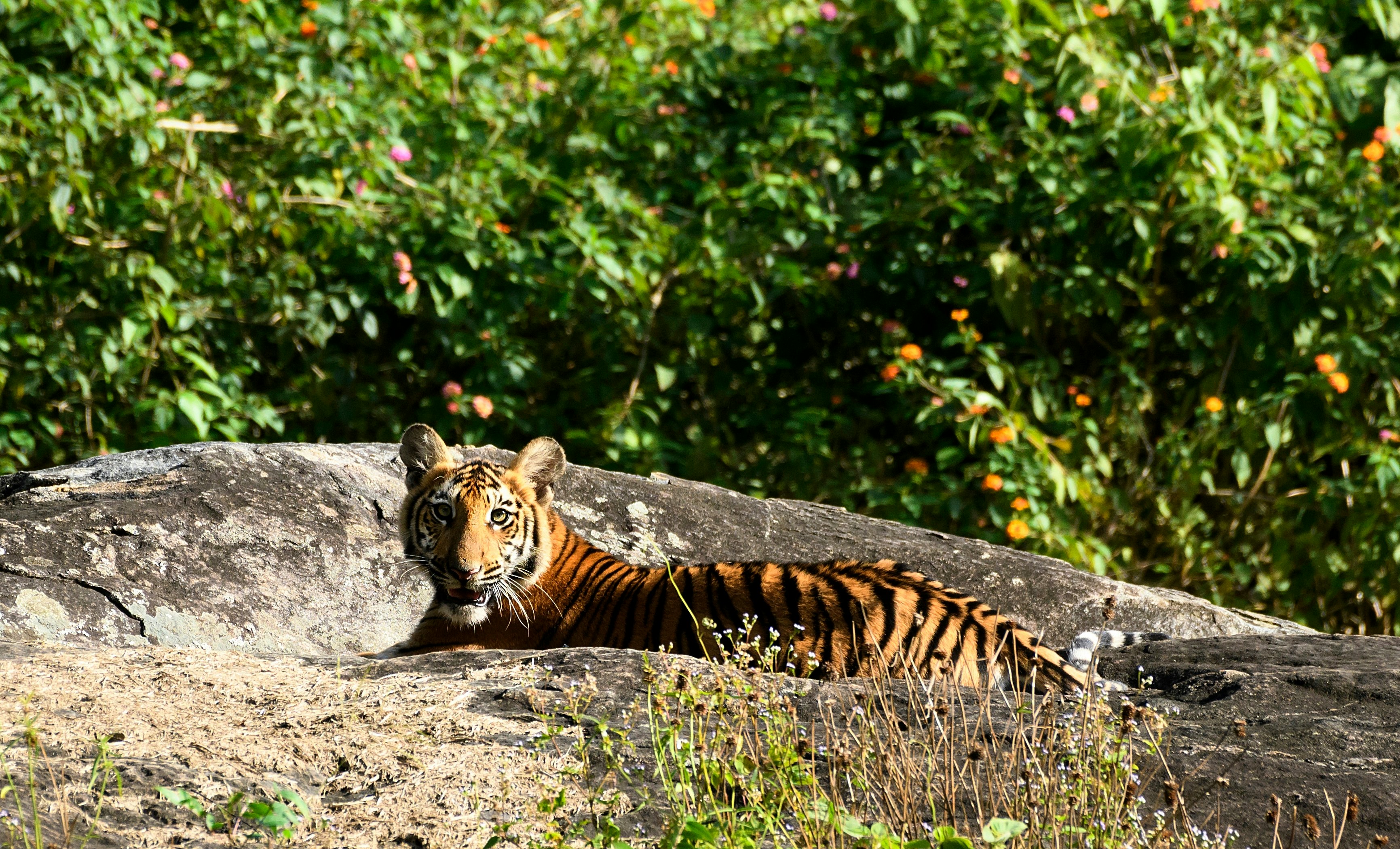
West of Mysuru (Mysore), Karnataka’s Nagarhole National Park is home to one of the world’s greatest concentrations of wild Asian elephants, joined by tigers, leopards, dholes (wild dogs), chital, gaurs and langurs. Many of these signature species also flit through Bandipur National Park just to the southeast, which encompasses 340 sq miles (880 sq km) at Karnataka’s junction with Kerala and Tamil Nadu.
Access to these carefully guarded reserves is via official 4WD or minibus tour only; some parks might also offer guided treks, but since regulations change often it’s best to check on the ground. You’ll dine and sleep at hands-on wildlife lodges, such as Nagarhole’s lakeside Waterwoods Lodge, Mudumalai’s long-established Jungle Hut and Bandipur’s stylish Dhole’s Den, or at welcoming homestays such as Green View in Periyar and Varnam Homestay in Wayanad.
For a thoroughly off-the-beaten-track Western Ghats wildlife experience, seek out Parambikulam Tiger Reserve in Kerala, or Tamil Nadu’s Anamalai Tiger Reserve, where Sinna Dorai’s Bungalow adds tea-estate luxury.

How to travel to the Western Ghats
Many travelers visit the Western Ghats on a larger trip to South India. The Nilgiri Mountain Railway is handy for reaching Ooty and Coonoor from within Tamil Nadu, and for heading onward to Kotagiri and Mudumalai Tiger Reserve. Apart from that, all access is by road, which means a bus or a car; booking a driver with their own car is a popular choice. Given the lengthy travel times, staying at least a couple of days in each hill station or national park is a great idea, particularly if you’re hoping to spot wildlife.
Munnar and Periyar Tiger Reserve are easily combined with a trip to Kerala’s southern coast and cultural capital Kochi (Cochin). Both Kochi and Kerala’s capital Thiruvananthapuram (Trivandrum) have international airports; buses take five to six hours from Kochi and around eight from Thiruvananthapuram to both Munnar and Periyar, and there are also five-hour buses between Munnar and Periyar. Wayanad is a little trickier to reach; the closest airports are at Kannur and Kozhikode (Calicut) in northern Kerala. Buses run from both cities to the Wayanad area in around three hours, or you can take a direct six-hour bus from Kochi.
For Kodaikanal, there are plenty of buses from within Tamil Nadu (including to/from the popular temple town of Madurai in around four hours), as well as Bengaluru (Bangalore) in Karnataka (around 12 hours). You can also catch a train from Chennai to Kodai Road, followed by a three-hour bus.
Karnataka’s national parks have good bus links to Mysuru, Bengaluru and Ooty.





